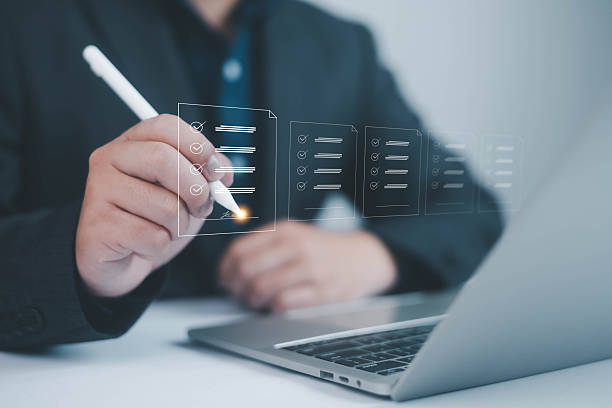An Introduction to On-Page SEO and Its Vital Importance

In today’s highly competitive digital world, visibility in search engines like Google is paramount.
On-Page SEO refers to a set of actions and techniques performed within your website to improve its ranking in search engine results pages (SERP).
These actions include optimizing various elements such as #content, #tags, #images, and #site_structure.
In fact, On-Page SEO is the foundation upon which your SEO campaigns are built.
Without strong On-Page SEO, even with the best backlinks, you may not achieve top rankings.
This section provides a comprehensive explanation of the basic concepts and the necessity of on-page site optimization.
The main goal of this area is to send clear and distinct signals to search engines about the topic and quality of your content.
This section offers an educational perspective for anyone who wants to understand what On-Page SEO is and why it should be prioritized.
Understanding these fundamental concepts is the first step to mastering the art of optimizing your website.
The better a search engine can understand your content, the more likely it is to be displayed for relevant searches.
Are you worried your company’s old website is driving away new customers? Rasawab solves this problem with modern and efficient corporate website design.
✅ Increases your brand’s credibility.
✅ Helps attract targeted customers.
⚡ Contact Rasawab for a free consultation!
Keyword Research: The Cornerstone of On-Page SEO
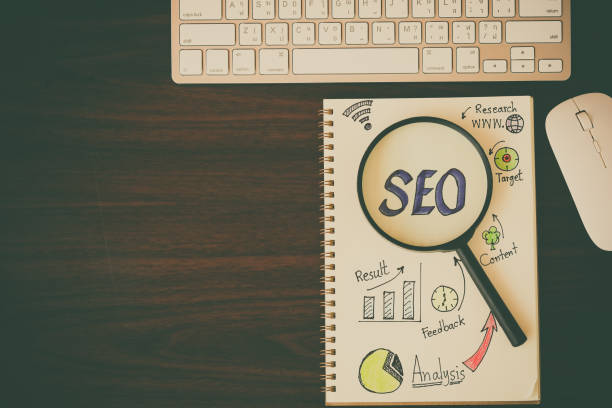
One of the most important pillars of On-Page SEO is keyword research.
This process involves finding the words and phrases your target audience uses in search engines to find products, services, or information related to your business.
Accurate keyword research allows you to create content that precisely aligns with user needs.
To do this, you should pay attention to search volume, competition level, and user intent for keywords.
Various tools like Google Keyword Planner, Ahrefs, and Semrush can assist you in this journey.
Choosing the right keywords not only helps improve your ranking in search results but also attracts targeted and high-quality traffic to your website.
This stage is specialized and extremely critical, as all subsequent content strategies and optimizations are built upon it.
Understanding what users search for helps you produce relevant and valuable content that is beneficial not only for search engines but also for users themselves.
In essence, this is a practical guide to starting the optimization process.
Optimizing Title Tags and Meta Descriptions: Impactful for Clicks

Title Tag and Meta Description are two very important elements in on-page SEO that directly impact your click-through rate (CTR) in search results.
The title tag is the name of your page displayed in the browser tab and as the main link in search results.
It should contain the main keyword and be appealing to encourage users to click.
Its length is usually recommended to be between 50 and 60 characters.
The meta description is a brief summary of the page’s content displayed below the title in search results, and although it doesn’t directly affect ranking, it is crucial for attracting clicks.
These descriptions should be accurate, engaging, and contain relevant keywords.
Optimizing these two elements is an art that requires precision and creativity to be both search engine-optimized and user-appealing.
This section educationally delves into the details of optimizing these tags.
Do you know how a creative title and meta description can revolutionize your traffic? This is a thought-provoking content that makes you ponder.
| SEO Element | Direct Impact on Ranking | Impact on Click-Through Rate (CTR) | Key Optimization Tips |
|---|---|---|---|
| Title Tag | High | Very High | Contains main keyword, engaging, less than 60 characters |
| Meta Description | Indirect (via CTR) | High | Engaging summary, includes keywords, max 160 characters |
| SEO-Friendly URL | Medium | Medium | Short, readable, contains keyword |
| Heading Tags (H1-H6) | Medium | Low (internal) | Logical structure, use keywords |
URL Structure and Internal Links for Strengthening Authority
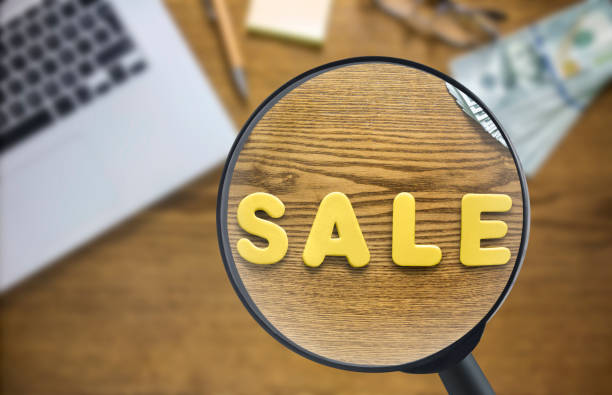
Your website’s URL structure and the way you use internal links are two other important factors in on-page optimization.
SEO-friendly URLs should be short, readable, and contain the page’s main keyword.
This not only helps users understand the page content but also sends positive signals to search engines.
On the other hand, internal links refer to links that point from one page on your website to another page on the same website.
These links help search engines understand your site’s structure, access deeper content, and “distribute page authority” across different pages of your site.
A strong internal linking strategy can help improve the ranking of less-visited pages and increase user dwell time on your site.
This section provides practical guidance for creating an optimized URL structure and effectively utilizing internal links.
These actions are considered an important part of your website’s on-page SEO.
Is your current e-commerce website not generating the sales you expect?
Rasawab is an expert in professional e-commerce website design!
✅ An attractive and user-friendly website aimed at increasing sales
✅ High speed and security for an ideal shopping experience⚡ Get a free online store design consultation with Rasawab!
High-Quality Content and Heading Structure: The Heart of On-Page SEO
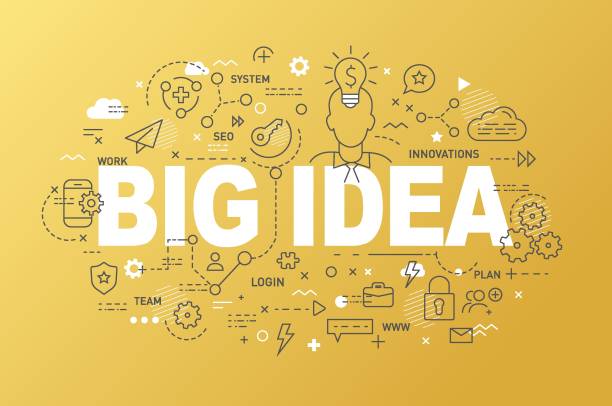
Content is king, and this statement holds truer than ever in On-Page SEO.
Producing valuable, comprehensive, original, and user-friendly content is the primary factor that can improve your ranking in search results.
Your content should not only answer user questions but also meet and even exceed their expectations.
In addition to content quality, its structure is also very important.
Proper use of heading tags (H1, H2, H3, etc.) helps search engines and users easily understand the structure and hierarchy of information on the page.
H1 should be used for the main title of the page and contain the main keyword.
H2s are used for subheadings and H3s for sub-sections of H2s.
This structuring not only increases content readability but also helps search engines identify keywords and main topics of each section.
This is a specialized yet educational section that demonstrates the importance of structured content.
Optimizing Images and Page Load Speed for a Better Experience

Image optimization and page load speed are two other important factors in On-Page SEO that directly impact user experience and, consequently, SEO ranking.
Images play a significant role in visual appeal and information transfer, but if not optimized, they can severely slow down your site.
To optimize images, you should use appropriate formats (like WebP), proper compression, and use alt-text containing relevant keywords.
Alt-text not only helps search engines understand image content but also provides useful information for visually impaired users.
Page load speed is also a crucial ranking factor.
Users and search engines prefer sites that load quickly.
You can increase your site speed by optimizing code, compressing files, using caching, and CDN.
This is vital guidance for enhancing your website’s performance.
The Role of User Experience (UX) in Modern On-Page SEO
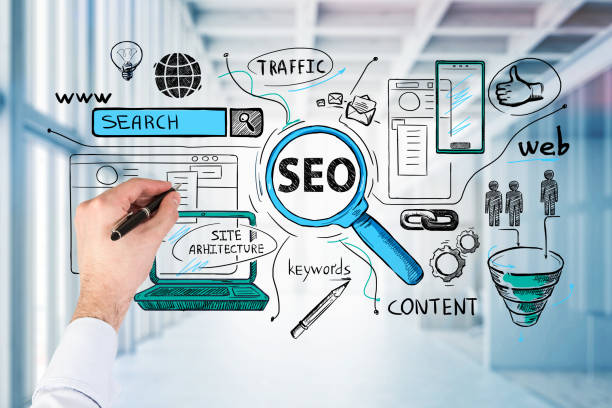
User experience (UX) is no longer a separate concept from On-Page SEO; it is an inseparable part of it.
Search engines are increasingly paying attention to UX signals such as Dwell Time, Bounce Rate, and user interaction with the page.
A well-designed website with easy navigation and engaging content provides a positive user experience, leading to increased dwell time and reduced bounce rate.
These signals indicate to search engines that your content is valuable and relevant.
Ensuring your site is responsive (Mobile-Friendly) for correct display on various devices, using readable fonts, and attractive visual layouts all contribute to improving UX.
This is an analytical perspective on the deep connection between user-centric design and success in On-Page SEO.
The ultimate goal of on-page optimization is not only to satisfy crawling robots, but also to delight users.
| UX Factor | Explanation | Impact on On-Page SEO |
|---|---|---|
| Page Load Speed | Time required for the full content of the page to load | Increased ranking and reduced bounce rate |
| Responsiveness (Mobile-Friendly) | Site compatibility with various devices (mobile, tablet, and desktop) | Essential for mobile ranking and user experience |
| Easy Navigation (User-Friendly Navigation) | Simplicity and logical structure of menus and links | Improved crawler access and user access to content |
| High-Quality and Engaging Content | Useful, relevant, and well-structured content | Increased dwell time, reduced bounce rate, positive signals to search engines |
| Readability and Visual Design | Use of appropriate fonts, paragraphing, relevant images | Improved user interaction and better content understanding |
Using Structured Data (Schema Markup) for Rich Results
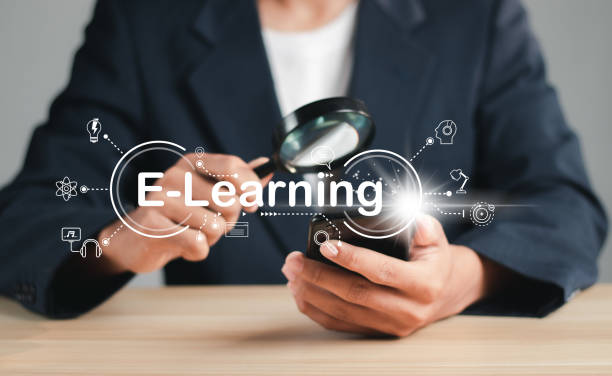
Structured data or Schema Markup, are codes added to your website to help search engines better understand your content and display it in richer forms (Rich Snippets) in search results.
These rich results can include star ratings, product prices, recipe cooking times, author information, or even frequently asked questions.
By using Schema Markup, you help search engines understand the exact meaning of your content, not just its words.
This can significantly help increase your visibility in SERP and improve your click-through rate.
Implementing Schema Markup is a specialized part of On-Page SEO that requires technical knowledge, but its results are very valuable.
For example, an e-commerce website can use schema to display product prices and availability in search results, which is a strong visual guidance for buyers.
Are you worried about losing customers because you don’t have a professional e-commerce website?
With e-commerce website design by Rasawab, forget these worries!
✅ Significant increase in sales and conversion rate of visitors to customers
✅ Professional and user-friendly design that builds customer trust
⚡ Get a free consultation from Rasawab
Reviewing and Analyzing On-Page SEO Performance with Various Tools

After implementing On-Page SEO techniques, the next step is to monitor and analyze their performance.
Tools like Google Analytics and Google Search Console provide valuable information about website traffic, ranked keywords, crawl errors, and user experience.
By analyzing this data, you can identify the strengths and weaknesses of your On-Page SEO strategy and make necessary improvements.
For example, if a specific page has a high bounce rate, it might indicate a need to improve the quality or structure of its content.
This process is analytical and iterative, helping you adjust your strategies based on real data.
Understanding how your website performs against competitors and identifying new optimization opportunities is of high importance.
New Trends and the Future of On-Page SEO for Sustained Results
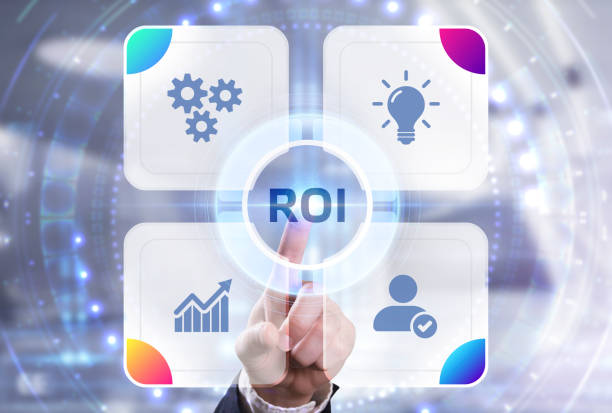
The world of SEO is constantly changing, and On-Page SEO is no exception.
To maintain ranking and long-term success, you must be aware of the latest trends and search engine algorithm updates.
Trends such as optimization for voice search, Google’s Core Web Vitals, AI in content creation, and the increasing importance of E-A-T (Expertise, Authoritativeness, Trustworthiness) are among the factors shaping the future of On-Page SEO.
This section is news-oriented and predictive, helping you prepare your strategies for the future.
You should always be eager to learn and adapt to changes to ensure your website remains at the top of search results.
On-Page SEO is not a static process, but a continuous path for improvement and growth.
Frequently Asked Questions
| Question | Answer |
|---|---|
| What is On-page SEO? | On-page SEO refers to a set of actions performed within your website to improve its ranking in search engine results. This includes optimizing content, site structure, and HTML code. |
| Why is On-page SEO important? | On-page SEO helps search engines understand your page’s content and determine if your content is relevant to searchers. It is the foundation of any successful SEO strategy. |
| What are the key elements of On-page SEO? | Page title (Title Tag), Meta Description, keyword usage, image optimization, heading structure (H1, H2, …), internal linking, and content quality are key elements. |
| How to optimize Title Tag? | The page title should include the main keyword, be attractive and click-inducing, and its length should be between 50 and 60 characters (or appropriate pixels) to be fully displayed in search results. |
| What is the role of Meta Description in On-page SEO? | The meta description is a summary of the page’s content displayed below the title in search results. Although it does not directly affect ranking, it helps SEO by increasing the click-through rate (CTR). |
| What is the importance of using heading structure (H1, H2, H3) in On-page SEO? | Headings structure the page content and make it easier to read. H1 is usually the main title of the page and should include the keyword. H2 and H3 are used to organize sub-sections and help search engines understand the content hierarchy. |
| How to effectively use keywords in content? | Keywords should be used naturally and logically throughout the content, including the introduction, body, and conclusion. Avoid keyword stuffing. |
| What steps are involved in image optimization for On-page SEO? | It includes compressing images to reduce size, using descriptive file names, adding appropriate Alt Text, and optimizing the image title and description. Alt Text is vital for accessibility and helping search engines understand image content. |
| What is Internal Linking and what are its benefits? | Internal linking means creating links from one page on your website to another page on the same website. This helps users easily navigate your site, distributes page authority across the site, and helps search engines better understand your site’s structure. |
| What is the importance of content quality in On-page SEO? | High-quality, accurate, comprehensive, and valuable content for users is the cornerstone of On-page SEO. Search engines prefer content that meets user needs. Quality content leads to longer user dwell time and reduced bounce rate, which are positive SEO signals. |
And other services of Rasawab Advertising Agency in the field of advertising
Smart Marketing Automation: Designed for businesses seeking online growth through personalized user experience.
Smart Link Building: A fast and efficient solution for online growth with a focus on optimizing key pages.
Smart Custom Software: A new service for increasing sales through attractive user interface design.
Smart UI/UX: A fast and efficient solution for attracting customers with a focus on attractive user interface design.
Smart UI/UX: A new service for increasing click-through rate through optimizing key pages.
And over hundreds of other services in the field of internet advertising, advertising consultation and organizational solutions
Internet Advertising | Advertising Strategy | Advertorial
Resources
Comprehensive On-Page SEO Guide MozesOptimizing Internal Links Web 24Importance of Sitemap in SEO NovinURL Structure and SEO in Backlinkfa
? Are you ready to transform your business in the digital world? Rasawab Digital Marketing Agency, with its expertise in various fields, including responsive website design, search engine optimization, and social media management, offers innovative solutions to achieve your goals. We help you attract more customers and develop your brand with a powerful online presence.
📍 Tehran, Mirdamad Street, next to Bank Markazi, Southern Kazeroun Alley, Ramin Alley, No. 6

